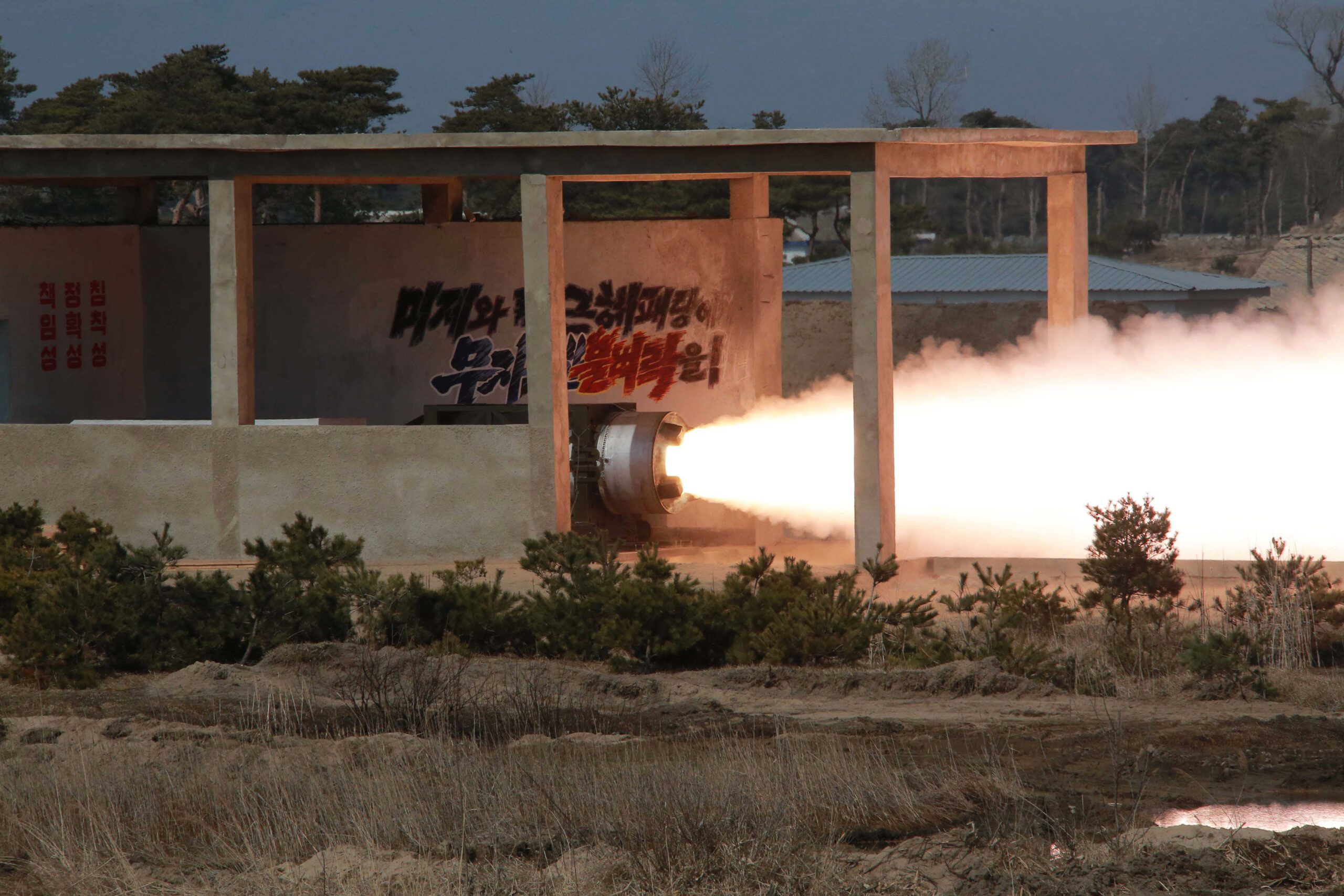SUMMARY
This is AI generated summarization, which may have errors. For context, always refer to the full article.

SEOUL, South Korea – North Korea’s recent solid-fuel rocket engine test suggests a step forward in missile technology, but it remains many years from using such advanced motors for a long-range missile capable of striking the US mainland, a US missile expert said Wednesday, March 30.
Last week’s test was personally monitored by leader Kim Jong-Un, who said it would allow for a major upgrade of the North’s missile delivery systems that would “strike great horror and terror into the hearts of our enemies”, according to state media.
Solid-fuel missiles would have distinct advantages – including greater mobility and the ability to launch within minutes – over Pyongyang’s current, largely liquid-fueled inventory.
Analyzing official pictures of the test, John Schilling, an aerospace engineer specializing in rocket and spacecraft propulsion, said it appeared to be of an engine “roughly 3 times more powerful” than any solid motor the nuclear-armed North had previously demonstrated.
A set of barely visible drawings indicate the motor is intended for the upper stage of a larger missile, suggesting the North might be developing a two-stage, solid-fuel replacement for its medium-range Rodong missile.
“Since, as far as we know, this missile does not exist, North Korea has a lot more work to do before it becomes operational,” Schilling wrote in a post on the closely followed 38North website.
He estimated an earliest target of 2019 for flight testing an intermediate-range solid-fuel missile, ahead of possible battlefield deployment in 2020.
And a solid-fuel, inter-continental ballistic missile (ICBM) capable of reaching the continental United States, is “still far in the future – perhaps 2030 or later”, he added.
Aside from short-range battlefield weapons, North Korea’s missiles to date have all used liquid propellant, which is extremely efficient but also corrosive and toxic, and requires complex engines.
Solid propellant is the preferred fuel for weaponry, as solid-fuel missiles require little maintenance, can survive rough handling and transport, and can be launched at a few minutes’ notice.
The launch time aspect would be crucial for North Korea in the event of a conflict, as South Korea’s missiles can reach targets anywhere in the North inside the 15 minutes it would take to fuel and launch a liquid-propellant rocket. – Rappler.com
Add a comment
How does this make you feel?
There are no comments yet. Add your comment to start the conversation.